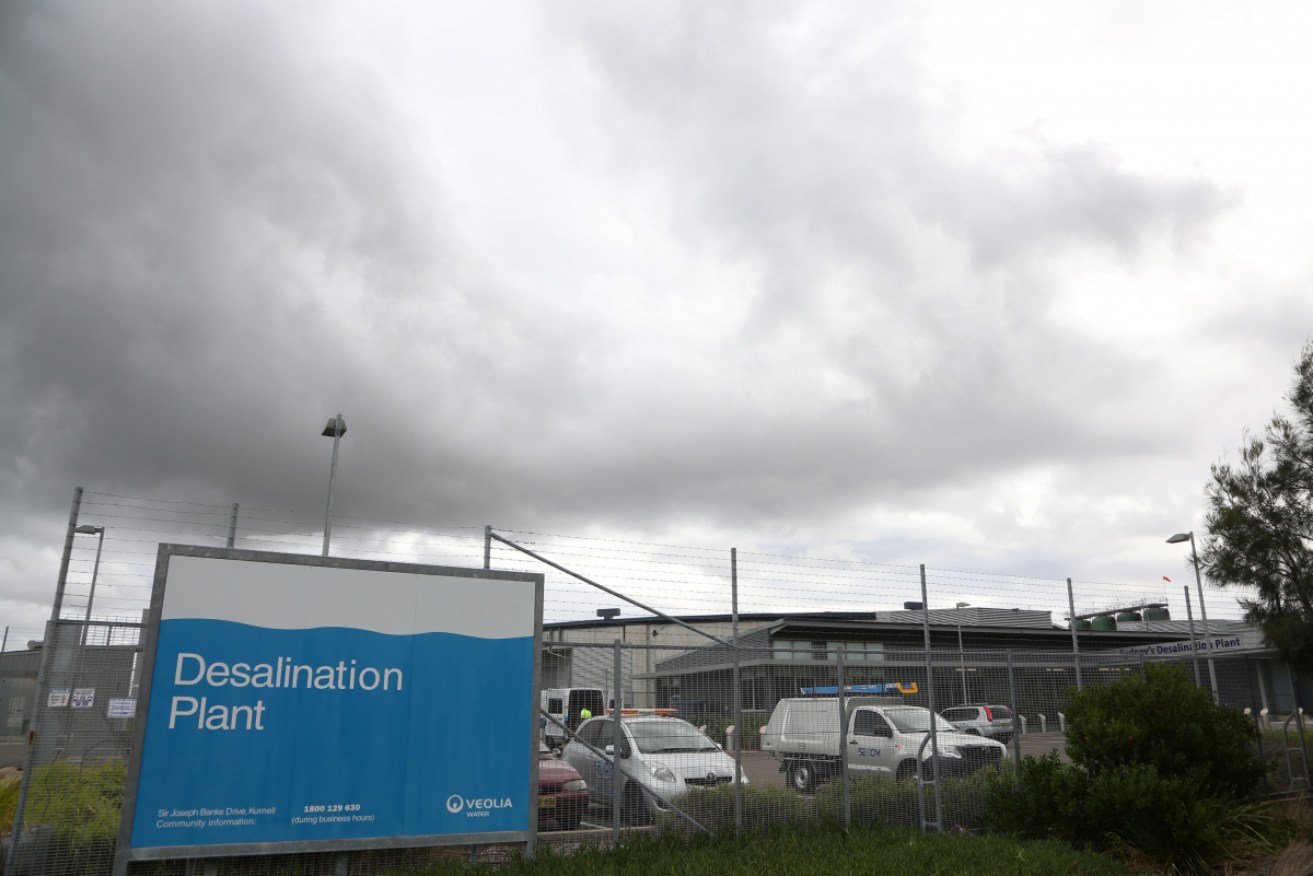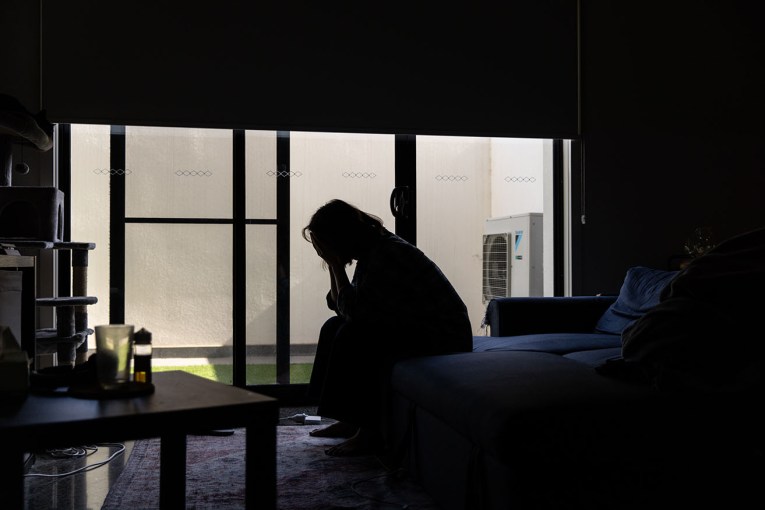What happens when the water runs out? Desalination turned on


The Sydney desalination plant in Kurnell on the city's south coast has never been needed. Photo: AAP
Households are about to feel the pinch of the drought, long after the dry spell hit river systems and farmers.
Sydney water levels have crashed 20 per cent in the past 12 months and 0.5 per cent in seven days, to reach just 60.1 per cent on Thursday.
The city’s water storage levels will likely hit the 60 per cent trigger point for turning on the desalination plant at Kurnell for the first time.
The plant opened in 2010, following the millennium drought, but has not yet been needed in the years since.
“The likelihood is that the desal will be commissioned on Saturday and start its work then,” NSW Resources Minister Don Harwin said on Thursday.
At this time last year, Sydney’s dams had 19.4 more percentage points of water than they do now.
The plant will remove salt and other impurities from sea water by reverse-osmosis, providing clean water independent of the climate outlook and rainfall.
On the other side of the country, Perth is already dependent on its two desalination facilities for water.
“They’ve been very reliant on them. They would have run out of water a long time ago [without them],” Professor Stephen Gray, executive director of Victoria University’s Institute for Sustainable Industries and Liveable Cities, told The New Daily.
Together, the two plants provide about half of Perth’s water needs.
“On the east coast, it’s a different story. All the plants were built and then we got large rain,” Professor Gray said.
Victoria has had a little use out of its plant. Plans to build it started in 2007, after the city’s water levels dwindled to about 29 per cent in the previous drought.
It can deliver up to 150 billion litres of water a year, about one-third of Melbourne’s needs.
But the most the Wonthaggi plant has produced is 50 billion litres in 2016-17. It has made 15 billion litres every year since.
The Victorian government orders the water by April each year, based on advice from Melbourne’s four metropolitan water businesses.
The Department of Environment, Land, Water and Planning said desalination “plays an important role in stabilising our water storage levels”.
“The recommendations are made on consideration of the current water storage conditions and water demands, the balance between the objectives of managing security of supply, minimising customer impacts and enabling efficient system operation as well as taking account of possible future population growth and climate change,” a spokesperson said.
No costs have been passed onto water bills.
Melbourne’s water storage was at 59.9 per cent on Thursday, down from 67.9 per cent on the same date last year.
In Queensland, the Gold Coast desalination plant has also been used to treat water in the 2011 Brisbane flood, as “the one way they could ensure good water quality”.
“Some of the drinking water treatment plants had a bit of trouble during the flood because the water quality was quite poor,” Professor Gray said.
The plant supplemented drinking water at the end of the state’s last drought in 2009 and 2010, during ex-tropical cyclone Debbie in 2017, and to substitute other water facilities when they’re upgraded.
The Queensland government says the plant, which can supply about 133 megalitres a day, could be needed in peak demand in summer as early as next year.
Total South Australia dam levels were 53 per cent on Thursday, down from 69 per cent on the same day last year.
SA has two sea water desalination plants, one at Lonsdale in Adelaide that has run since 2011 and another on Kangaroo Island.
The Lonsdale facility can produce 100 gigalitres a year at its capacity, or about half of Adelaide’s annual water needs.
Typically it contributes about 8 gigalitres of drinking water about nine months of the year and is on standby for the remaining three months.
The Kangaroo Island plant opened in 1999 and can produce up to 400 kilolitres of water a day.
The dry spell will likely trigger the use of Sydney’s Kurnell plant on the city’s south coast from this weekend.
Households still won’t drink desalinised water for about another four months, and it would take six to eight months for the plant to reach full capacity.
That could create 250 million litres of drinking water a day, or about 15 per cent of Sydney’s needs.
It would then operate until water storage levels recover to 70 per cent, or at least 14 months under the metropolitan water plan.
The Independent Pricing and Regulatory Tribunal estimated the plant would add an extra $25 to $35 a year to the average annual water bill.
Households most likely won’t feel that pinch until next financial year, when the plant reaches full production.
Our dependence on controversial projects such as desalination – or other options like recycled water – will likely increase over time.
Climate change is expected to bring more severe dry periods as well as heatwaves, which is when our water consumption increases.
“The last drought demonstrated that our water security wasn’t wonderful for extended periods of drought,” Professor Gray said.
“I think we needed something.”








